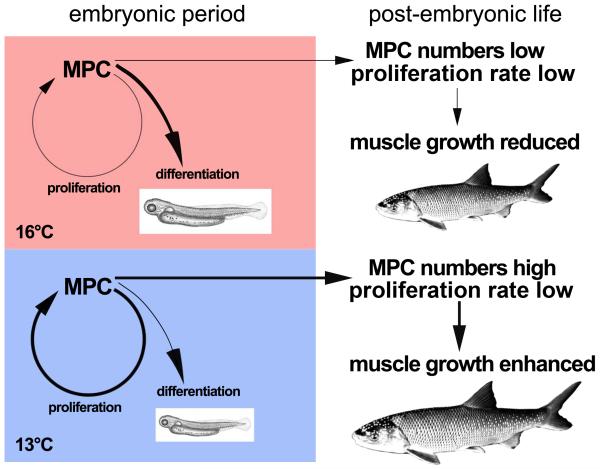Fig. 10.
Diagram summarising and explaining the main results of the present study at the MPC level. Warm-imprinted (16°C) pearlfish embryos tend to reduce MPC proliferation in favour of early differentiation. This generates large and massive hatchlings but leaves only limited MPC reserves with reduced proliferative activity for further growth, finally resulting in smaller adults. Embryos imprinted at medium temperature (13°C) and, to a lesser extent, also the cold-imprinted (8.5°C) embryos tend to enhance MPC proliferation at the cost of early differentiation. This leads to smaller hatchlings but ongoing proliferation allows for sustained MPC reserves to compensate for the initially delayed growth, finally resulting in larger adults.

